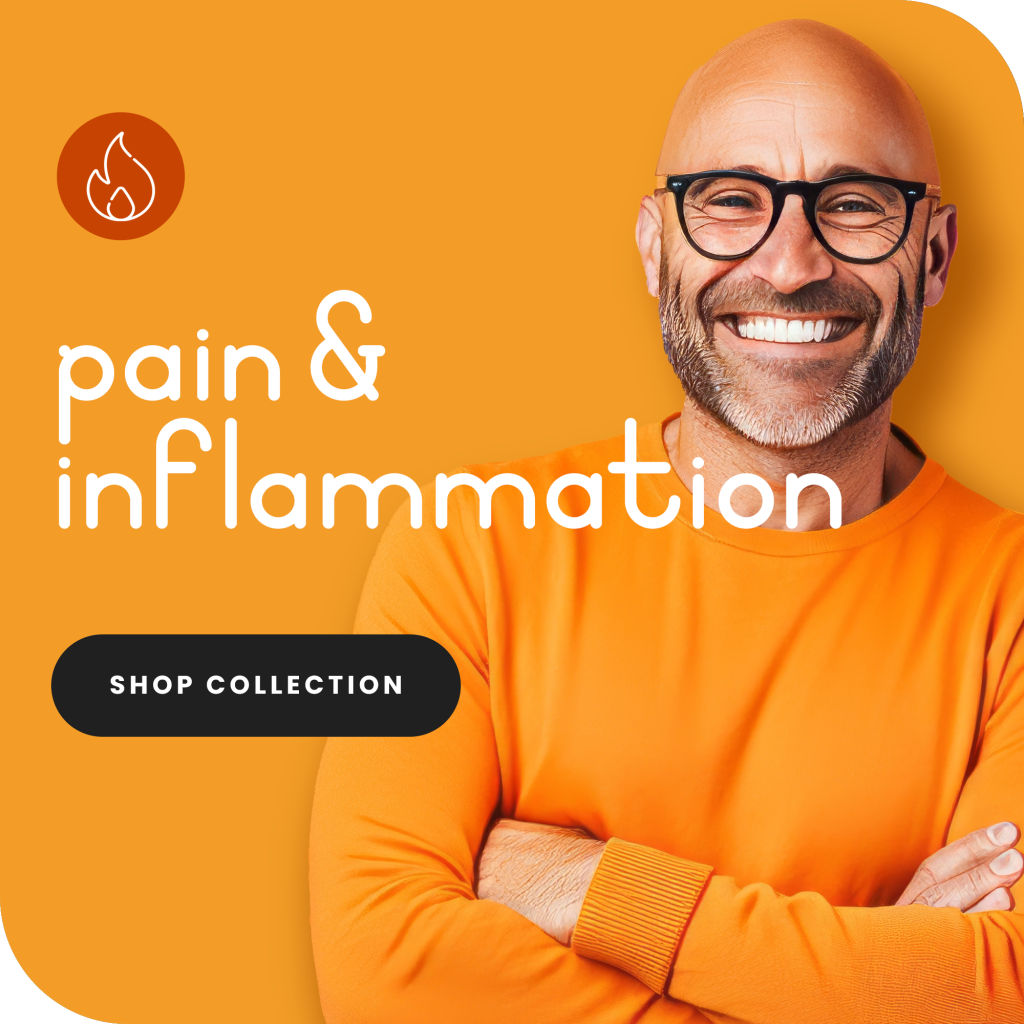Turmeric Curcumin to block Joint Pain Processes
Turmeric, a bright yellow spice derived from the Curcuma longa plant, contains a potent compound called curcumin known for its anti-inflammatory properties. Curcumin has been extensively studied for its ability to reduce joint pain and inflammation associated with conditions like osteoarthritis and rheumatoid arthritis. By inhibiting inflammatory pathways in the body and blocking the production of inflammatory cytokines, curcumin in turmeric can help relieve joint pain and improve overall joint function.
Ginger Root The Natural and Tasty Enemy of Joint Pain
Ginger root, derived from the Zingiber Officinale plant, is renowned for its anti-inflammatory and analgesic properties. The active compounds in ginger, including gingerol and shogaol, exert powerful anti-inflammatory effects by inhibiting the production of inflammatory mediators such as prostaglandins and leukotrienes. These compounds also have analgesic properties, helping to reduce pain perception in the joints. Regular consumption of ginger root or supplementation with ginger extract has been shown to effectively relieve joint pain and stiffness, making it a popular natural remedy for managing arthritis and other inflammatory joint conditions.
Rosehip to Stop Joint Damage by Oxidative Stress
Rosehip, the fruit of the rose plant, is rich in antioxidants, vitamins, and polyphenols that contribute to its anti-inflammatory properties. Rosehip contains high levels of vitamin C, which plays a crucial role in collagen synthesis and joint health. Additionally, rosehip is a natural source of galactolipids, compounds known for their anti-inflammatory effects. Studies have demonstrated that supplementation with rosehip powder or extract can help reduce joint pain, stiffness, and inflammation, particularly in people with osteoarthritis. The combination of antioxidants and anti-inflammatory compounds in rosehip makes it a valuable natural remedy for promoting joint health and alleviating pain associated with joint conditions.
Methylsulfonylmethane (MSM) the Joint Builder
Methylsulfonylmethane (MSM) is a naturally occurring compound found in fruits, vegetables, and certain grains. MSM is known for its anti-inflammatory and analgesic properties, making it a popular supplement for reducing joint pain and inflammation. MSM works by inhibiting the production of inflammatory cytokines and prostaglandins while also scavenging free radicals that contribute to joint damage. Additionally, MSM plays a role in supporting the structure and integrity of connective tissues like cartilage, ligaments, and tendons, which can further help reduce joint pain and improve mobility. Regular supplementation with MSM has been shown to effectively relieve symptoms of osteoarthritis and other inflammatory joint conditions.
Glucosamine to Rebuild Cartilage
Glucosamine is a natural compound found in the body, primarily in the cartilage of joints. It plays a crucial role in maintaining the structure and function of cartilage, the flexible tissue that cushions the joints and prevents bone-on-bone contact. Glucosamine supplementation is commonly used to support joint health and relieve symptoms of osteoarthritis. By providing the building blocks necessary for cartilage repair and synthesis, glucosamine can help reduce joint pain, stiffness, and inflammation associated with osteoarthritis. Additionally, glucosamine may have anti-inflammatory effects by modulating the production of inflammatory mediators in the joints, further contributing to its pain-relieving properties.
Chondroitin to Restore Cartilage Elasticity
Chondroitin is a structural component of cartilage that helps give it its elasticity and shock-absorbing properties. It is often used in combination with glucosamine for its synergistic effects on joint health. Chondroitin works by attracting water molecules into the cartilage matrix, improving its hydration and lubrication. This helps enhance the cushioning effect of cartilage and reduce friction between joint surfaces, thereby alleviating joint pain and stiffness. Additionally, chondroitin may have anti-inflammatory effects by inhibiting the activity of enzymes that degrade cartilage and promote joint inflammation. When combined with glucosamine, chondroitin can provide comprehensive support for joint health and function, making it an effective natural remedy for managing osteoarthritis and other joint conditions.
Joint Pain: You can Fight Back with Natural Remedies
In conclusion, the realm of natural remedies for joint pain offers a wealth of possibilities for those seeking relief from discomfort. By harnessing the power of botanical allies like turmeric, ginger root, and others, you can take proactive steps towards achieving greater comfort and mobility.









